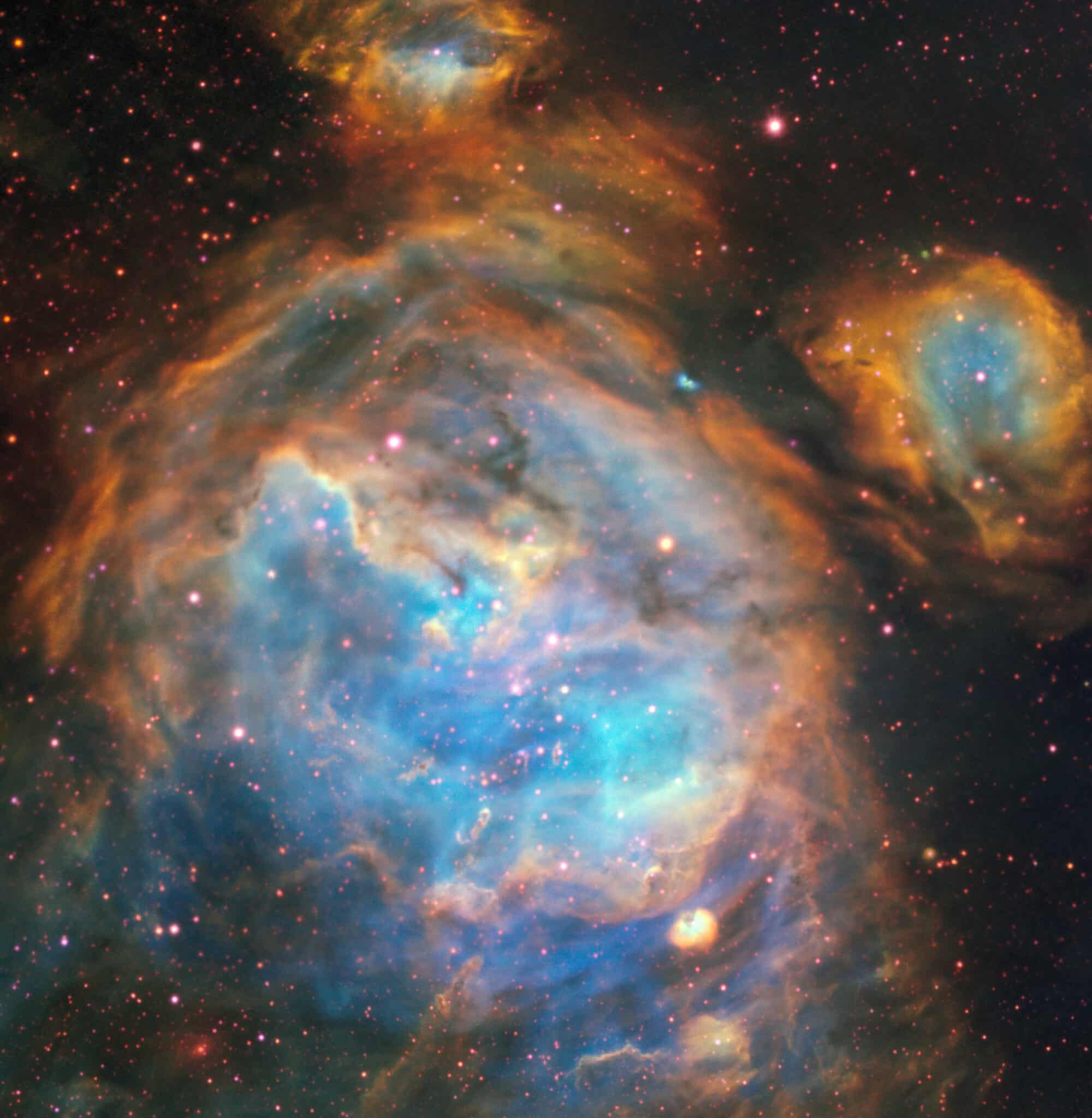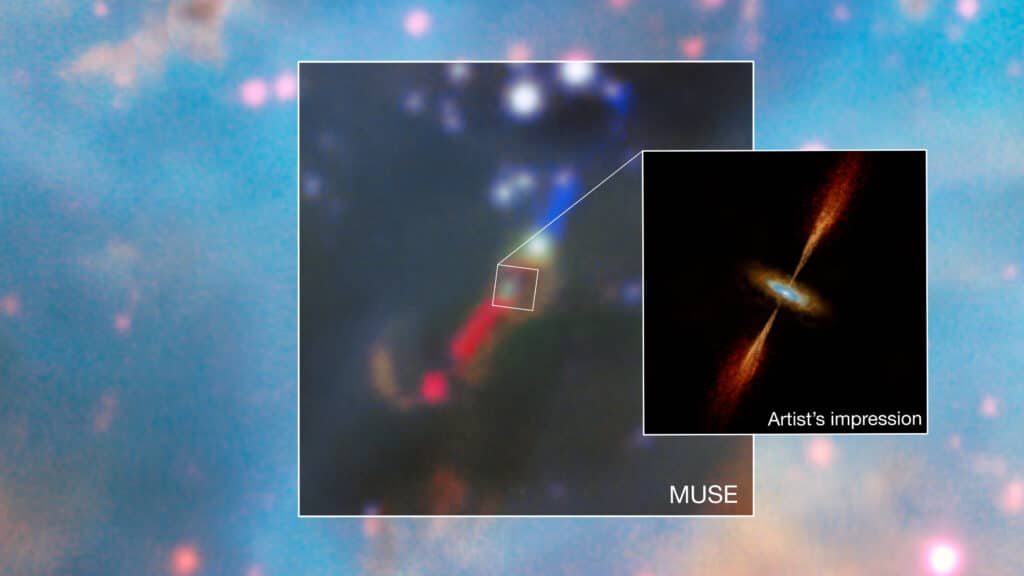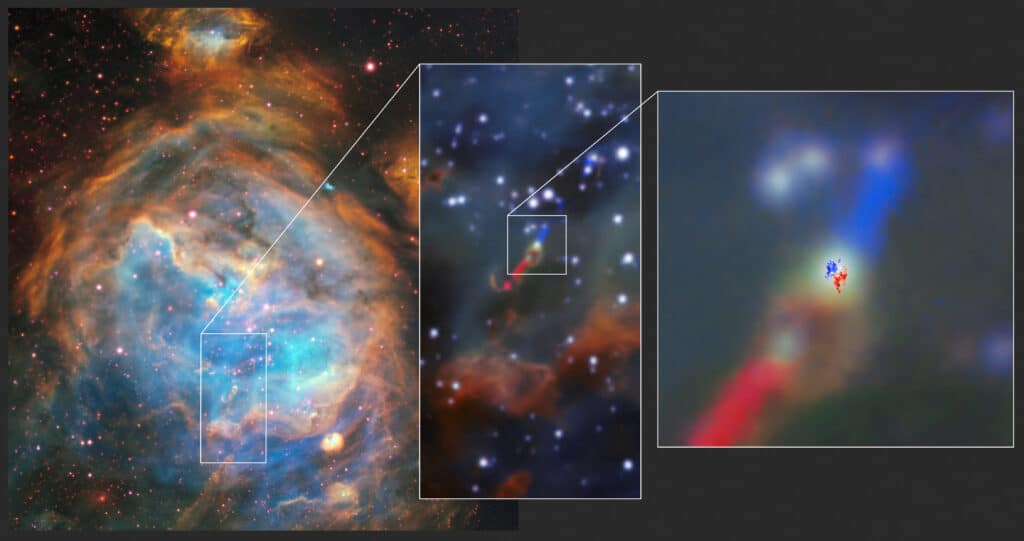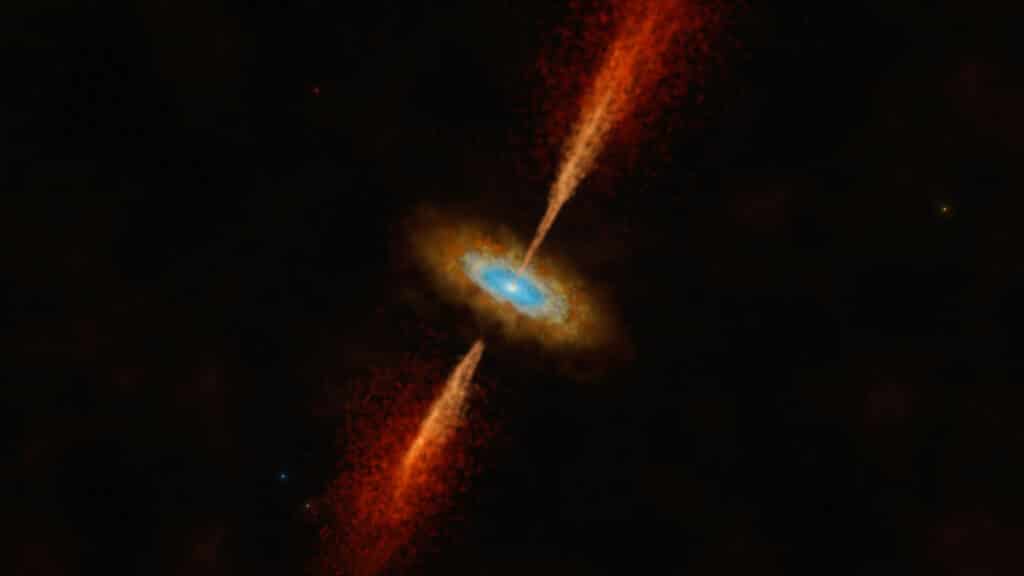Unprecedented astronomical discoveries always yield great excitement for scientists and space fanatics alike, and this latest find is nothing short of fascinating. Astronomers have detected a massive young star surrounded by a rotating gas structure in the Large Magellanic Cloud, a galaxy near our own Milky Way. This discovery is not just a first for observing such a star formation outside our galaxy but also sheds light on the mysteries of how massive stars are born.
The star, part of a system known as HH 1177, is more than eight times the mass of our Sun. This makes it a massive young stellar object (MYSO). Unlike other known MYSOs which are typically found within our Milky Way and hidden within thick clouds of dust and gas, this one is visible to our telescopes.
What’s intriguing is the discovery of a rotating gas structure, or accretion disk, around this star. This disk is where material spirals inward before getting incorporated into the star, a process central to star formation. This phenomenon is commonly observed in smaller, nearby stars but rarely seen in such massive, distant ones.

Why Is HH 1177 An Important Discovery?
This finding is crucial for several reasons:
- Extragalactic Insight: It’s the first direct evidence of such a star-forming system in another galaxy, offering a unique opportunity to study star formation in different cosmic conditions.
- Unique Visibility: The star’s visibility, unlike its Milky Way counterparts, suggests it formed in an environment with lower metal and dust content. This challenges our understanding of massive star formation, which usually happens hidden within dense molecular clouds.
- Disk Dynamics: The detection of a Keplerian disk, a rotating structure where the speed of gas movement is governed by the star’s gravity, provides insights into how material is funneled onto the star. It also offers clues about the early stages of massive star development.
- Stellar Evolution Clues: The characteristics of this system, including the mass and stability of the accretion disk, help us understand the life cycle of massive stars, from their birth to their eventual demise.
Anna McLeod, an associate professor at Durham University in the UK and lead author of the study, shared her elation over the exciting discovery. “When I first saw evidence for a rotating structure in the ALMA data I could not believe that we had detected the first extragalactic accretion disc,” she said in a statement. “It was a special moment.”

This discovery was made possible by the advanced capabilities of the Atacama Large Millimeter Array (ALMA), a state-of-the-art observatory partnered with the European Southern Observatory (ESO). Its high sensitivity and resolution allowed astronomers to observe the detailed structure and motion of the gas around this distant star.
Megan Reiter, assistant professor of physics and astronomy at Rice University, highlights the implications of this discovery for understanding star formation. “This is strong evidence that high-mass stars, which are several times bigger than the Sun, form in the same way as lower-mass stars,” she said. “That’s been a big question for a long time.”
Star Formation Like None Other
The star was first spotted deep within a gas cloud in the Large Magellanic Cloud following observations with the Multi Unit Spectroscopic Explorer (MUSE) instrument on ESO’s Very Large Telescope (VLT). “We discovered a jet being launched from this young massive star, and its presence is a signpost for ongoing disc accretion,” recalled McLeod.
Jonathan Henshaw, a research fellow at Liverpool John Moores University in the UK and co-author of the study, likened it to the change in pitch of an ambulance siren as it passes by. “The frequency of light changes depending on how fast the gas emitting the light is moving towards or away from us,” he said.

This disc’s detection around a massive star is particularly noteworthy as such stars in our galaxy are typically obscured by dust, making them challenging to observe. However, the Large Magellanic Cloud, located 160,000 light-years away, offers clearer visibility due to its lower dust content. This unique opportunity allows astronomers to observe star and planet formation processes more directly.
“It’s arguably more exciting to discover a disc in this neighboring galaxy as opposed to our own, because the conditions there are closer to what we think things were like earlier in the universe,” said Reiter.
The research paper is published in the journal Nature.












